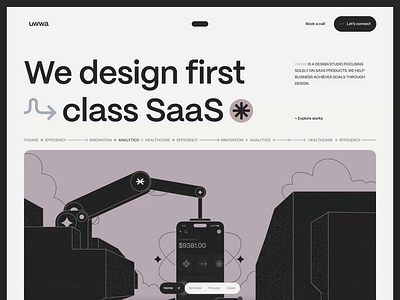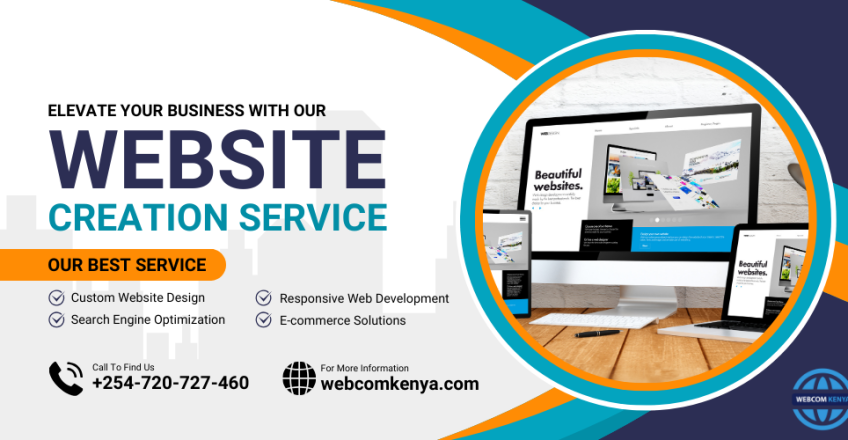Top Trends in Website Design for 2024: What You Need to Know
Top Trends in Website Design for 2024: What You Need to Know
Blog Article
Modern Website Layout That Catches Attention and Converts
In a significantly electronic landscape, contemporary web site style has actually arised as a pivotal variable in capturing individual attention and driving conversions. As we explore these necessary elements, it becomes clear that comprehending their interplay can significantly influence an internet site's performance and individual contentment.
Importance of Visual Hierarchy
Aesthetic hierarchy is a critical aspect in website design, as it overviews individuals' interest and boosts their overall experience. By tactically organizing content, designers can direct individuals to one of the most essential info first, thereby enhancing involvement and enhancing use. Efficient visual hierarchy employs various techniques, consisting of size, spacing, comparison, and color. Bigger components normally attract the eye, while contrasting shades can stress vital messages, making them attract attention among even more subdued parts.
Including a sensible flow in content arrangement is crucial; as an example, positioning one of the most essential information on top of a page promotes instant recognition. Furthermore, constant usage of typography, such as differing font dimensions and styles, helps establish a clear content framework. This organization not just help in navigating however likewise builds trust, as customers feel much more comfortable when they can easily find what they are seeking.
Inevitably, a well-executed aesthetic pecking order not just boosts aesthetic charm however likewise substantially affects customer actions. By prioritizing crucial elements and ensuring a seamless experience, designers can efficiently convert site visitors right into clients, strengthening the significance of this fundamental style principle in modern-day site development.
Responsive Layout for All Tools
Developing a seamless experience throughout numerous gadgets is necessary in today's digital landscape, where customers accessibility internet sites from smartphones, tablet computers, and desktops alike. Responsive design is a vital approach that guarantees websites adapt fluidly to different screen sizes, alignments, and resolutions. By employing adaptable grids, pictures, and CSS media queries, developers can develop layouts that maintain visual integrity and capability, despite the tool being used.
The importance of receptive layout expands beyond aesthetics; it straight affects user engagement and conversion rates. A site that works well on all tools motivates longer sees and decreases bounce rates, as individuals are more probable to interact with material that is simple to browse. Search engines, specifically Google, prioritize mobile-friendly sites in their rankings, making receptive design an essential component of search engine optimization (SEO)
Integrating responsive style not just enhances customer experience however additionally simplifies the advancement process. By creating a solitary site that functions across devices, services can conserve time and sources compared to creating different mobile and desktop computer variations. Eventually, receptive style is an essential method for contemporary web site style, ensuring availability and complete satisfaction for all customers, no matter of their device.
Engaging Interactive Aspects
While a responsive style lays the groundwork for a useful website, incorporating interesting interactive aspects is vital for capturing user focus and fostering deeper links. Website Resources Design. Interactive aspects, such as computer animations, tests, and clickable infographics, develop a more dynamic individual experience, urging visitors to invest more time on the site
Including interactive functions can additionally guide users through complicated info, making it simpler to absorb web content. Interactive sliders can show product variants, while embedded video clips can supply demos or testimonies that reverberate more than static pictures or text. Gamification techniques, like rewards for involving or completing jobs with web content, can enhance user inspiration and retention.
Efficient use of interactive components not just enhances the individual experience yet can additionally lead to higher conversion prices. It is necessary to balance interactivity with performance; excessively complex attributes may impede website rate, negatively impacting customer contentment.
Streamlined Navigating Practices
Efficient navigation is a cornerstone of any kind of successful website, as it straight affects customer experience and web content access. Streamlined navigating practices ensure that individuals can easily situate information, improving their interaction with the website. A well-structured navigating food selection should be intuitive and simple, usually featuring a minimal variety of primary categories to stay clear of frustrating site visitors.
To accomplish structured navigation, designers need to focus on an ordered structure that realistically organizes material. Executing breadcrumb tracks can provide customers with context about their current place within the website, permitting for smooth backtracking. In addition, making use of drop-down menus can properly preserve space while still giving accessibility to subcategories.
Responsive layout is crucial, as navigation should be practical across all gadgets (Website Design). Mobile customers, in certain, gain from touch-friendly menus and collapsible areas that preserve functionality without jeopardizing aesthetics

Reliable Call-to-Action Techniques
A well-crafted call-to-action (CTA) is important for guiding customers towards preferred end results on an internet site, as it urges them to involve with web content or make an acquisition. To maximize their effectiveness, CTAs need to be clear, engaging, and strategically positioned throughout the site.
First, make use of action-oriented language that interacts necessity or worth, such as "Start," "Join Now," or "Insurance claim Your Discount." This language not only inspires individuals yet also sets clear expectations about the following steps.
2nd, you can try these out think about style aspects; CTAs need to stick out visually via contrasting colors, ample whitespace, and noticeable positioning. A button that is very easy to see and click increases the likelihood of customer interaction.
Additionally, individualizing CTAs based upon individual habits or demographics can dramatically improve engagement. Tailored messages reverberate more with individuals, driving higher conversion rates.

Conclusion
In verdict, contemporary internet site style emphasizes the assimilation of visual pecking order, responsive layouts, involving interactive components, streamlined navigation, and reliable call-to-action techniques. These parts jointly boost individual experience, guaranteeing that visitors stay engaged and inspired to check out web content further. By prioritizing these style concepts, businesses can dramatically improve customer retention and conversion prices, ultimately bring about higher success in the electronic landscape. The continuous evolution of internet layout highlights its critical duty in reliable online communication and advertising and marketing.
In an increasingly electronic landscape, modern web site design has arised as a pivotal element in capturing individual focus and driving conversions.Aesthetic pecking order is a vital aspect in internet site style, as it guides users' attention and boosts their general experience.The importance of responsive layout prolongs beyond aesthetic appeals; it straight influences individual involvement and conversion prices.Incorporating responsive design not just enhances individual experience however additionally streamlines the growth process. Ultimately, responsive layout is a basic approach for contemporary web site layout, ensuring accessibility and complete satisfaction for all users, no matter of their gadget.
Report this page